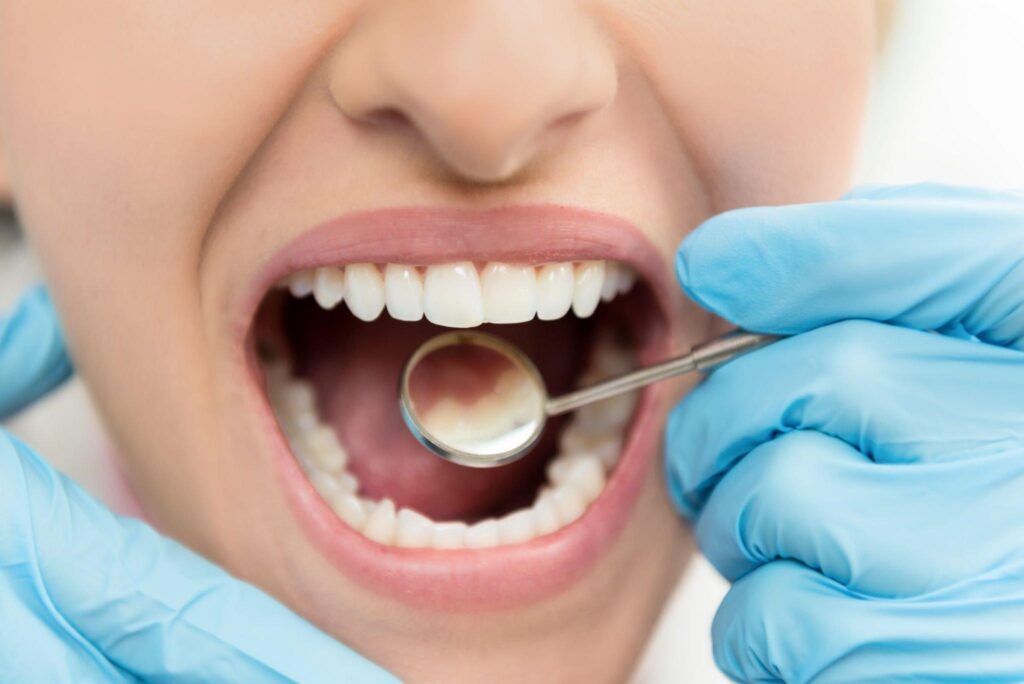When considering a dental crown, the necessary amount of tooth structure is an important factor to take into account. A dental crown is a cap used to restore the function and appearance of a damaged or decayed tooth. However, the question remains – how much tooth is required for a dental crown?
Typically, a sufficient amount of healthy tooth structure is necessary to support the crown, with at least a quarter of the visible portion of the tooth being ideal. The actual amount of tooth structure needed may differ depending on individual circumstances.
In general, a minimum of 2 millimeters of tooth structure may be necessary for crown placement. This measurement takes into account the surface area of the tooth that needs to be covered by the crown. It’s important for the dentist to assess the tooth and determine if there is sufficient tooth material to support the crown.
Having enough tooth structure is crucial for the long-term success of the crown. Without enough healthy tooth material, the crown may not be securely fitted and could potentially fail over time. Therefore, dentists carefully evaluate the tooth’s condition before proceeding with crown placement.
How Dental Crowns are Placed

Dental crowns are a common restorative treatment used to repair damaged teeth and restore their strength, function, and appearance. The placement of dental crowns typically involves several steps to ensure a precise fit and optimal results.
The first step in placing a dental crown is preparing the damaged tooth. Decay or diseased tissue is removed, and the remaining tooth structure is shaped to create a stable foundation for the crown. This shaping process ensures enough space for the crown to be placed easily over the tooth.
Once the tooth has been prepared, an impression is taken. This impression serves as a mold from which a custom-made crown will be created. The impression captures the exact size, shape, and alignment of the prepared tooth, ensuring that the crown will fit perfectly and blend seamlessly with the surrounding natural teeth.
While the permanent crown is being fabricated by a dental laboratory, a temporary crown is usually placed over the prepared tooth to protect it and provide functionality. Temporary crowns are typically made from a composite resin material and are designed to withstand everyday use.
Once the permanent crown is ready, it is carefully fitted and bonded onto the prepared tooth using dental cement. The dentist ensures that the crown aligns properly with the surrounding teeth and makes any necessary adjustments to ensure a comfortable fit and a natural-looking appearance.
In summary, the placement of dental crowns involves removing damaged or decayed tissue, shaping the tooth structure, taking an impression, and placing a temporary crown while the permanent crown is being made. This meticulous process ensures that the final crown fits securely, provides long-lasting functionality, and enhances the patient’s oral health and smile.
What is the Required Amount of Teeth?

When determining how much tooth is needed for a dental crown, there are several factors to consider. The general rule is to have at least a quarter of the visible portion of the tooth remaining to provide adequate support for the crown. This ensures that there is enough healthy tooth structure to securely hold the crown in place.
However, there are certain conditions that may require additional measures to establish a stable foundation for the crown. In cases where the tooth has extensive decay or damage extending below the gumline, crown lengthening may be necessary. This procedure involves removing some of the gum tissue and, if needed, a small amount of bone to expose more of the tooth structure.
If the tooth has undergone a root canal procedure, it may be weakened and require additional support. A post-and-core foundation can be placed within the root canal to provide stability for the crown. This involves placing a metal or composite resin post into the root canal and building up the core of the tooth with dental materials.
In situations where there is not enough natural tooth structure, dental implants may be recommended as an alternative to crown placement. Dental implants involve the placement of an artificial tooth root, usually made of titanium, into the jawbone. A crown is then attached to the implant to replace the missing tooth.
In summary, the amount of tooth needed for a dental crown depends on the visible part of the tooth and its overall condition. While having at least a quarter of the visible portion remaining is a general rule, additional measures may be necessary in certain cases to establish a stable foundation for the crown. It is important to consult with a dentist to determine the best course of action for each individual situation.
What Happens if there is a Lack of Tooth?

When it comes to getting a dental crown, having enough natural tooth structure is crucial for a successful and durable restoration. However, there may be situations where there is not enough tooth material to support a crown. In such cases, additional measures may need to be taken to establish a stable foundation. For instance, if the tooth has extensive decay or damage below the gumline, crown lengthening may be necessary. This procedure involves removing some gum tissue and, if required, a small amount of bone to expose more tooth structure.
Another scenario is when a tooth has undergone a root canal procedure, which can weaken it. In these cases, a post-and-core foundation may be placed within the root canal to provide stability. This involves placing a metal or composite resin post into the root canal and building up the core of the tooth with dental materials.
However, if there is not enough natural tooth structure available, dental implants may be recommended as an alternative to crown placement. Dental implants involve the placement of an artificial tooth root made of titanium into the jawbone. A crown is then attached to the implant, offering a natural-looking and sturdy solution for replacing the missing tooth.
Using Composite Resin
Composite resin is a dental material frequently utilized for the preparation of a tooth prior to the placement of a dental crown. It is a tooth-colored plastic that is able to be directly bonded to the enamel of the tooth, resulting in the reinforcement and establishment of a sturdy base for the crown.
When a tooth is severely damaged or compromised, composite resin alone may not be strong enough to restore it effectively. However, when used in combination with a dental crown, it can work exceptionally well. The composite resin fills in any gaps, reinforces weakened areas, and creates a stable base for the crown to be placed on.
Using composite resin for crown preparation begins with the dentist applying a rubber-like material called a “putty” to create an impression of the tooth. This impression is used to fabricate a temporary crown while the permanent one is being made. Once the tooth is prepared, the dentist shapes and bonds the composite resin to build up the tooth structure and ensure a seamless fit for the final crown.
Overall, composite resin is an excellent tool in restorative dentistry. Its tooth-colored appearance makes it a popular choice for achieving a natural-looking solution. While it may not be sufficient for restoring severely damaged teeth on its own, when used together with a dental crown, composite resin can provide a durable and aesthetically pleasing result.
Placing a Post-and-Core Foundation
Placing a post-and-core foundation is a necessary step in certain cases where the remaining tooth structure is not sufficient to support a dental crown. This additional support system ensures the longevity and durability of the crown.
The process begins with the dentist opening up the tooth and performing a root canal procedure to remove any infected or damaged dental pulp. Once the root canal is completed, a metal post is carefully placed into the root of the tooth. This post acts as an artificial tooth root, providing a stable foundation for the crown.
To ensure the post is securely locked in place, the tooth is filled and sealed with dental materials. This prevents any potential leakage or infection and creates a solid base for the crown to be placed on.
The placement of a post-and-core foundation allows for the successful placement of a dental crown, restoring both the functionality and aesthetics of the damaged tooth. This procedure helps to strengthen and support the remaining tooth structure, providing a natural-looking and long-lasting solution for patients in need of restorative dental treatments.
Dental Implants
Many people choose dental implants as a solution for missing or severely damaged teeth. The procedure involves surgically placing a titanium post into the jawbone, which acts as an artificial root for a replacement tooth, also known as a crown.
The process of getting a dental implant begins with a detailed examination and evaluation to determine if the patient is a suitable candidate. If the jawbone is strong and healthy enough, the titanium post is surgically inserted into the bone. This post acts as a sturdy foundation for the crown.
Over time, the jawbone fuses with the titanium post through a process called osseointegration, ensuring a secure and stable fit. Once the post has fully integrated, the replacement tooth, or crown, is securely attached to the post. This crown is custom-made to match the color, shape, and size of the patient’s natural teeth, creating a seamless and natural-looking smile.
Dental implants are considered an effective solution when there is insufficient tooth structure to support other dental treatments, such as dental bridges or dentures. They offer a durable and long-lasting option for patients looking to restore their smile and regain oral function, as they can closely resemble natural teeth in both strength and appearance.
In conclusion, dental implants are an effective and reliable solution for replacing missing or damaged teeth. With the titanium post acting as an artificial root, dental implants provide a stable foundation for a replacement crown, offering patients a natural-looking solution for their dental needs.
Conclusion
In conclusion, when there is insufficient tooth structure to support other dental treatments, dental implants can provide a long-lasting and durable solution. However, it is important to discuss treatment options with a dentist to determine the best course of action for each individual case.
One of the main advantages of dental implants is their ability to mimic the strength and appearance of natural teeth. Unlike dental bridges or dentures, dental implants offer a secure and stable fit by integrating with the jawbone through osseointegration. This not only restores oral function but also creates a seamless and natural-looking smile.






